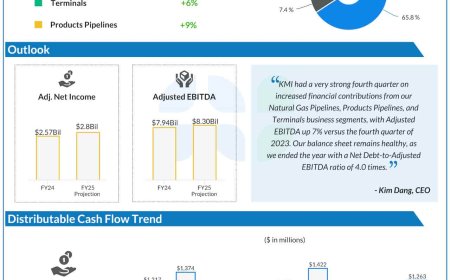Cannabis Market 2024 Year-End Review
Cannabis is becoming increasingly mainstream in North America. Recent Pew Research Center analysis reveals that most Americans now live in states where recreational cannabis is legal, and a remarkable 79 percent have at least one dispensary in their county. However, federal legalization remains elusive, creating questions for investors watching the space. Meanwhile, in Canada, companies are looking to the government for stronger support. Here the Investing News Network examines the key trends that shaped North America's cannabis industry in 2024.US rescheduling stalls, Canadian companies face challengesThe US cannabis sector saw excitement in May, when the US Department of Justice proposed that the drug be rescheduled from a Schedule I substance to a Schedule III substance. The US Drug Enforcement Administration (DEA) formally initiated the process in August, and a hearing was scheduled for December 2.However, this was later clarified to be a preliminary hearing focused on procedural matters and without witness testimony. The clarification came after Chief Administrative Law Judge John Mulrooney II challenged the process by which the DEA selected its witnesses, requesting more information on the qualifications of those set to testify.Heading into 2025, the outlook for US cannabis reform remains uncertain, particularly when it comes to the timing and likelihood of rescheduling. The process is now not expected to be finalized until late 2025.Also in the US, the long-awaited SAFER Banking Act failed to gain enough support from the Senate to pass, leaving cannabis businesses with limited access to traditional banking services.The Canadian cannabis market faced a setback as well this past year when the federal budget failed to address industry concerns, particularly the high excise tax that continues to eat into profits. Instead, Health Canada proposed a series of changes to the country's cannabis regulations in June to streamline operations and reduce costs.The changes include simplifying licensing, production and security clearance requirements, increasing production limits for “micro-cultivators” and making it easier for licensees to submit required reports to Health Canada.Health Canada is currently considering comments after a public consultation period that ended in July.US state cannabis market developmentsWhile cannabis rescheduling stalled in the US, state markets saw more movement. Ohio launches recreational salesOhio launched recreational cannabis sales on August 6, marking the only new state market for the year. Its entry into the legal cannabis arena is expected to generate significant economic activity, tax revenue and job creation within the state. Recreational sales reportedly topped US$131 million in less than three months.Kentucky legalizes medical cannabisKentucky’s cannabis market also saw developments in 2024 with the legalization of medical cannabis and the establishment of a regulatory framework for cultivation and distribution. However, the rollout of the program faced challenges and mixed reactions. The state established a limited licensing system, with a set number of licenses to be issued for cultivators, processors and dispensaries. Due to the limited number of licenses and high demand, a lottery system was used to determine who would receive licenses. At the same time, cities and counties were given the ability to opt out of allowing cannabis businesses to operate within their borders. This has led to some jurisdictions prohibiting dispensaries or other cannabis-related businesses, and has resulted in a slow rollout for medical cannabis in Kentucky. New York's recreational rollout stallsNew York's recreational cannabis market experienced growth in 2024, but the slow rollout of legal dispensaries allowed the illicit market to remain competitive. The state's cannabis control board has increased its efforts to crack down on illegal sales, but problems with unlicensed retailers persist. Adding to the state’s legal woes, on December 4, the Medical Cannabis Industry Association sued cannabis regulators over an “unconstitutional” and “onerous” US$20 million fee imposed by the state for medical licensees looking to cross into the recreational market. The group also highlights that New York is losing tax revenue. Election brings mixed resultsNovember saw mixed results for US states with cannabis legalization on the ballot. Nebraska was the only state to legalize recreational cannabis, while Florida, North Dakota, South Dakota and Arkansas maintained prohibition.How did major cannabis players perform in 2024?2024 tested the resilience of cannabis companies and investors. In its review of the year, the Panther Group mentions how it had to pivot, focusing its resources on the top 20 percent of the market — “the stable, scalable operators who are critical to the industry’s long-term health.”Here's a look at what some of the industry's biggest players did in 2024 and how they performed. SNDL (NAS


Cannabis is becoming increasingly mainstream in North America.
Recent Pew Research Center analysis reveals that most Americans now live in states where recreational cannabis is legal, and a remarkable 79 percent have at least one dispensary in their county.
However, federal legalization remains elusive, creating questions for investors watching the space.
Meanwhile, in Canada, companies are looking to the government for stronger support.
Here the Investing News Network examines the key trends that shaped North America's cannabis industry in 2024.
US rescheduling stalls, Canadian companies face challenges
The US cannabis sector saw excitement in May, when the US Department of Justice proposed that the drug be rescheduled from a Schedule I substance to a Schedule III substance. The US Drug Enforcement Administration (DEA) formally initiated the process in August, and a hearing was scheduled for December 2.
However, this was later clarified to be a preliminary hearing focused on procedural matters and without witness testimony. The clarification came after Chief Administrative Law Judge John Mulrooney II challenged the process by which the DEA selected its witnesses, requesting more information on the qualifications of those set to testify.
Heading into 2025, the outlook for US cannabis reform remains uncertain, particularly when it comes to the timing and likelihood of rescheduling. The process is now not expected to be finalized until late 2025.
Also in the US, the long-awaited SAFER Banking Act failed to gain enough support from the Senate to pass, leaving cannabis businesses with limited access to traditional banking services.
The Canadian cannabis market faced a setback as well this past year when the federal budget failed to address industry concerns, particularly the high excise tax that continues to eat into profits. Instead, Health Canada proposed a series of changes to the country's cannabis regulations in June to streamline operations and reduce costs.
The changes include simplifying licensing, production and security clearance requirements, increasing production limits for “micro-cultivators” and making it easier for licensees to submit required reports to Health Canada.
Health Canada is currently considering comments after a public consultation period that ended in July.
US state cannabis market developments
While cannabis rescheduling stalled in the US, state markets saw more movement.
Ohio launches recreational sales
Ohio launched recreational cannabis sales on August 6, marking the only new state market for the year.
Its entry into the legal cannabis arena is expected to generate significant economic activity, tax revenue and job creation within the state. Recreational sales reportedly topped US$131 million in less than three months.
Kentucky legalizes medical cannabis
Kentucky’s cannabis market also saw developments in 2024 with the legalization of medical cannabis and the establishment of a regulatory framework for cultivation and distribution.
However, the rollout of the program faced challenges and mixed reactions.
The state established a limited licensing system, with a set number of licenses to be issued for cultivators, processors and dispensaries. Due to the limited number of licenses and high demand, a lottery system was used to determine who would receive licenses. At the same time, cities and counties were given the ability to opt out of allowing cannabis businesses to operate within their borders. This has led to some jurisdictions prohibiting dispensaries or other cannabis-related businesses, and has resulted in a slow rollout for medical cannabis in Kentucky.
New York's recreational rollout stalls
New York's recreational cannabis market experienced growth in 2024, but the slow rollout of legal dispensaries allowed the illicit market to remain competitive. The state's cannabis control board has increased its efforts to crack down on illegal sales, but problems with unlicensed retailers persist.
Adding to the state’s legal woes, on December 4, the Medical Cannabis Industry Association sued cannabis regulators over an “unconstitutional” and “onerous” US$20 million fee imposed by the state for medical licensees looking to cross into the recreational market. The group also highlights that New York is losing tax revenue.
Election brings mixed results
November saw mixed results for US states with cannabis legalization on the ballot. Nebraska was the only state to legalize recreational cannabis, while Florida, North Dakota, South Dakota and Arkansas maintained prohibition.
How did major cannabis players perform in 2024?
2024 tested the resilience of cannabis companies and investors.
In its review of the year, the Panther Group mentions how it had to pivot, focusing its resources on the top 20 percent of the market — “the stable, scalable operators who are critical to the industry’s long-term health.”
Here's a look at what some of the industry's biggest players did in 2024 and how they performed.
SNDL (NASDAQ:SNDL), which owns and operates a network of cannabis retail stores across Canada, has seen share price growth in 2024, up 17.09 percent year-to-date as of December 23.
The company’s most recent quarterly report, released on November 5, projects positive free cashflow for 2024. Notably, SNDL's liquor retail segment has shown improved profitability, with operating income increasing by 42.5 percent year-on-year during the third quarter despite a minor decrease in revenue.
Trulieve (CSE:TRUL,OTCQX:TCNNF), which commands a significant share of the Florida market, saw share price momentum earlier in 2024, but is set to end the year flat. The company focused on expanding its retail footprint this past year, with a substantial number of new dispensaries opening, primarily in Florida.
Tilray (NASDAQ:TLRY,TSX:TLRY) demonstrated progress this year in both achieving profitability and capitalizing on its diversified business model. Its October 10 report for its first fiscal quarter of 2025 shows its net loss is improving, with healthy margins for its beverage alcohol, cannabis and wellness segments.
This success, coupled with overall increased efficiency and gross profit, has Tilray projecting positive free cashflow for the year, a significant milestone in the cannabis industry. On November 7, the company also reported positive trial results for an oral cannabis extract for chemotherapy-induced nausea and vomiting.
Despite a dip in overall Canadian cannabis revenue in its second fiscal quarter of 2025, Canopy Growth's (NASDAQ:CGC,TSX:WEED) medical cannabis sales jumped 16 percent compared to the same period last year, while adult-use sales faced a temporary setback. The company’s US division also completed its acquisition of Acreage Holdings, a US-based multi-state operator with a strong presence in New York.
Canopy Growth's international business delivered an especially strong performance in Q2, with a 12 percent year-on-year increase in revenue growth, driven by markets in Poland and Germany. In particular, its Storz & Bickel vaporizer brand saw a significant boost of 32 percent thanks to regulatory changes in Germany and increased US sales.
Strategic partnerships with EU-based cultivators helped the company establish a foothold in Europe.
Investor takeaway
The US cannabis industry is navigating a complex landscape of opportunities and challenges. While market expansion and increased mainstream acceptance drive growth, regulatory hurdles and financial pressures persist.
As the industry matures, companies that can adapt to changing regulations, demonstrate profitability and meet evolving consumer demands are likely to emerge as leaders in this dynamic market.
While the Canadian cannabis market has progressed further, work remains if it is to fully flourish.
Overall, the future of the cannabis industry will depend on ongoing legal reforms, technological advancements and consumer trends, making it a sector to watch closely in the coming years.
Don’t forget to follow us @INN_Cannabis for real-time news updates!
Securities Disclosure: I, Meagen Seatter, hold no direct investment interest in any company mentioned in this article.











































